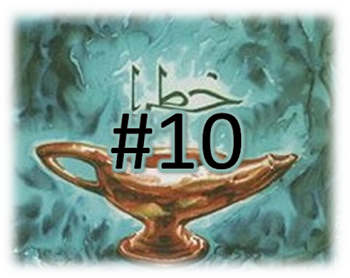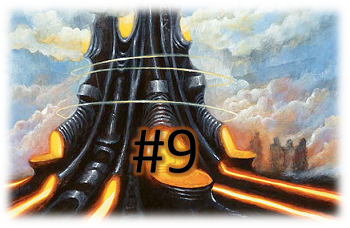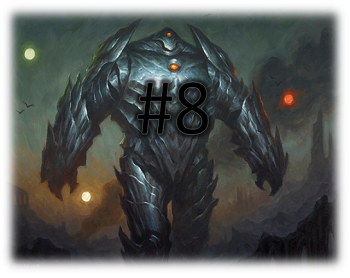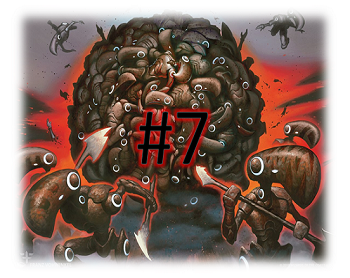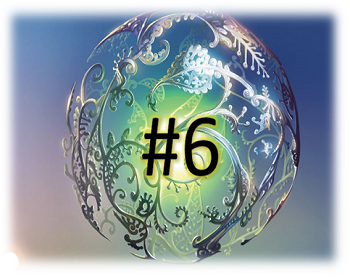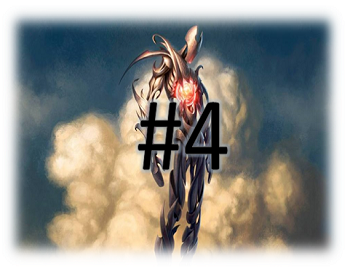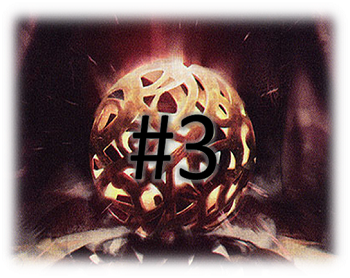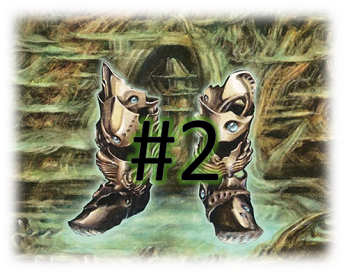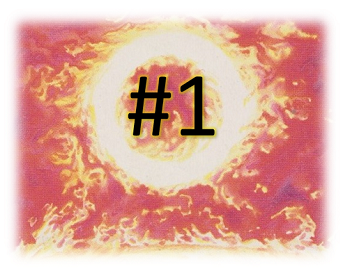Vitu-Ghazi, the City-TreeVitu-Ghazi, the City-Tree | Art by Martina Pilcerova
Welcome to Too-Specific Top 10, where if there isn’t a category to rank our pet card at the top of, we’ll just make one up! (Did you know that Lightning HelixLightning Helix is the only two-color spell from Ravnica: City of Guilds that can deal damage to any target?)
Boros. Selesnya. Golgari. Dimir. These are all names that have become so ubiquitous within Magic: The Gathering that we use them to describe any two-color pairing, and that in itself is indicative of just how great Ravnica was when it came out 20 years ago.
Before we visited the all-city plane, we would call our decks things like "Blue-White Control" or "Black-Red Aggro," and the set was so popular that that changed almost overnight.
But let's ask the real question: What are the best cards for Commander - a format that wouldn't become popular for another decade - from the first Ravnica block? This block includes the sets Ravnica: City of Guilds, Guildpact, and Dissension.
Top 10 Cards from Original Ravnica Block
- FarseekFarseek
- Watery GraveWatery Grave
- Godless ShrineGodless Shrine
- Breeding PoolBreeding Pool
- Hallowed FountainHallowed Fountain
- Stomping GroundStomping Ground
- Steam VentsSteam Vents
- Blood CryptBlood Crypt
- Overgrown TombOvergrown Tomb
- Temple GardenTemple Garden
Oh, right. This was the block that originally brought us Shocklands. Yeah, those were always going to be the top of this list. All right, no biggie. This is an easy problem to fix.
Top 10 Nonland Cards from Original Ravnica Block
Block:
- FarseekFarseek
- Dimir SignetDimir Signet
- Rakdos SignetRakdos Signet
- Izzet SignetIzzet Signet
- Orzhov SignetOrzhov Signet
- Azorius SignetAzorius Signet
- Boros SignetBoros Signet
- [REDACTED] (On actual list)
- Utopia SprawlUtopia Sprawl
- [REDACTED] (On actual list)
Oh right, this was the set that originally brought us Signets. Yeah, those were always going to be at the top of the list. One more go?
Top 10 Non-Land, Non-Ramp Cards From Original Ravnica Block
Criteria: Cards originally printed in Ravnica: City of Guilds, Guildpact, or Dissension that don't add mana or put lands directly onto the battlefield. As is tradition, all results are ordered by EDHREC score.
10. Grand Arbiter Augustin IVGrand Arbiter Augustin IV
(Helms 9,860 Decks, Rank #148; 56,006 Inclusions, 3.61% of 1,549,967 Decks)
It's always a bit awkard starting off these lists with almost universally loathed cards. As the play numbers describe, however, everyone may hate Grand Arbiter Augustin IVGrand Arbiter Augustin IV, but that doesn't mean that folks aren't playing him.
Still, rather than go over the misery of game after game where you did nothing but draw cards and pass turn, why don't we instead briefly visit an alternate list that could have been?
Top 10 Commanders from Original Ravnica Block
- Grand Arbiter Augustin IVGrand Arbiter Augustin IV
- Niv-Mizzet, the FiremindNiv-Mizzet, the Firemind
- Teysa, Orzhov ScionTeysa, Orzhov Scion
- Savra, Queen of the GolgariSavra, Queen of the Golgari
- Tolsimir WolfbloodTolsimir Wolfblood
- Experiment KrajExperiment Kraj
- Ulasht, the Hate SeedUlasht, the Hate Seed
- Momir Vig, Simic VisionaryMomir Vig, Simic Visionary
- Rakdos the DefilerRakdos the Defiler
- BorborygmosBorborygmos
Now, every commander on this list except Grand Arbiter has something in common: They've all been power-crept out of the format, almost completely. Which, I have to imagine, other old-heads find quite sad.
These commanders were the lifeblood of early Elder Dragon Highlander, back when Bracket 1 was just how you played. Games lasted three hours on purpose, with nothing much usually happening until at least turn four.
Now, I don't know that I have that kind of time anymore, and maybe you don't either. But I will say that this list admirably demonstrates what was lost when things sped up and we started seeing commanders designed for the format: the entire concept of playing your favorite cards.
Believe it or not, there never was a super-competitive build of Tolsimir WolfbloodTolsimir Wolfblood or BorborygmosBorborygmos, in any format. Which was precisely why these cards saw play in Commander. In a world where people still played Standard, there was a constant chorus that these cards were bad. They were "Limited cards," and widely panned by the competitive crowd.
Early Commander was about playing those cards that didn't see play anywhere else, cards that you loved but would get rightfully laughed off a table at a 60-card event. And for those that loved Standard, and Extended Modern? It was a place to play those cards that had since rotated, rather than letting them rot in your binder with a $0.60 price tag.
Twenty years on, from an old-head that loves Commander both as it is now and as it was then, I do have to ask: Where do we play those cards now?
9. Dark ConfidantDark Confidant
(77,022 Inclusions, 2.20% of 3,499,001 Decks)
Speaking of cards that used to see a lot of play, it's Dark ConfidantDark Confidant! Once considered one of the best card-draw creatures ever printed, "Bob" is now often seen as too slow and too unpredictable.
We're talking about Commander here, though, which means there not only should be room for everyone's favorite gossip-monger, there is! Two per cent of all black decks is huge, and the death of Confidant has been wildly exaggerated - at least in Commander.
It turns out that drawing a card every turn for two mana and also being able to swing in for damage is still good. Who knew?
8. Coiling OracleCoiling Oracle
(96,088 Inclusions, 6.22% of 1,544,763 Decks)
Simic is widely critiqued as the most broken and thoughtless of Magic's color combinations. It incentivizes and rewards you for doing the most basic things in Magic: ramping and drawing cards. And really, that identity started with cards like Coiling OracleCoiling Oracle.
Before blue-green became Simic, it had a much different identity. The most popular creature was Mystic SnakeMystic Snake. Temporal SpringTemporal Spring combined the likes of Plow UnderPlow Under and Fallow EarthFallow Earth with BoomerangBoomerang. Wood SageWood Sage milled cards and drew specific creature cards that you had to know how many copies you were playing, making you feel wise without using the words "draw a card" anywhere on it.
Now, I'm not saying that Coiling OracleCoiling Oracle and Simic at large ruined everything. Far from it. I'm often a degenerate Simic guy, myself. But if there's a card that reflects the shift to a T, it's Oracle. A small creature with an ETB that either ramps you or draws you a card? It's all right there on the tin, promising delightfully broken things for just doing what you already want to be doing in any Magic deck anyway.
7. Hour of ReckoningHour of Reckoning
(116,077 Inclusions, 3.61% of 3,212,123 Decks)
If Ravnica made the identity of blue-green into more or less "ramp and draw cards," then it debilitatingly boiled the identity of white-green down to a single word: Tokens. Luckily, along with that came support cards like Hour of ReckoningHour of Reckoning, which remains the most popular board wipe in Token decks to this day.
Seven mana was a lot for the cost, even at the time, but it turns out, if you have 18 Soldiers sitting around, it's not too hard to tap seven of them to wipe the board before you swing in with the other 11.
6. Life from the LoamLife from the Loam
(140,203 Inclusions, 4.37% of 3,206,730 Decks)
If we set the guild stereotypes aside for a moment, there were also just... generically good cards that came out of Ravnica. Life from the LoamLife from the Loam was perhaps one of the most famous examples of this: a powerhouse of a lands card that has defined the archetype across nearly every format at one point or another.
Two mana to grab three lands back from the graveyard would be a price few would pay, despite it being a Land TaxLand Tax-esque return on investment. Being able to do it every turn, however? That's an entirely different animal.
And whether it be Azusa, Lost but SeekingAzusa, Lost but Seeking, Seismic AssaultSeismic Assault, or simply lootloot effects, it's never been too hard to find something to do with a whole bunch of lands in your hand.
5. Muddle the MixtureMuddle the Mixture
(159,035 Inclusions, 4.66% of 3,411,592 Decks)
Seeing Life from the LoamLife from the Loam so low on this list was a surprise to me, but Muddle the MixtureMuddle the Mixture gives a hint as to what lies ahead: the "Competitive" cards. While Dark ConfidantDark Confidant, Coiling OracleCoiling Oracle, and Life from the LoamLife from the Loam all see some play in their respective casual archetypes, none of them are really considered must-play cards in the arena where decks are made up of 95% "must-play" cards: Competitive EDH (cEDH).
To be sure, Muddle the MixtureMuddle the Mixture does also see play outside of the format where it's known as a backup piece of interaction that can also fetch game-winners like Underworld BreachUnderworld Breach and Thassa's OracleThassa's Oracle.
But that's exactly the point: Muddle the Mixture is so versatile that it can see play in hyper-optimized decks and also be one of the few "bad" tutors you can include in a Bracket 1 deck that's just looking to find its secret commander Humble DefectorHumble Defector.
That kind of versatility is rare, and is exactly why this otherwise fairly forgettable card ends up this far up on the list.
4. Chord of CallingChord of Calling
(175,178 Inclusions, 5.46% of 3,206,730 Decks)
People have been telling me that Chord of CallingChord of Calling is a good card for years, and I've always scoffed at the idea. Three mana plus X to grab a creature? That's insanely expensive, even to be able to do it at instant speed and to put it on the battlefield!
Sure, you can convoke it, but that's a win-more trap if I've ever seen one. Right?
Well, it turns out that as much as I've never been able to afford one, Gaea's CradleGaea's Cradle does exist. Said existence makes the creation of low-to-the-ground decks that can land three creatures by turn two and be tapping it for seven mana on turn three rather trivial. It therefore follows that those same decks can play Chord on that or a later turn to go find a huge creature that just... wins the game.
It's boring, it's predictable. But there's no doubt that it's also powerful, from Bracket 2 Elf decks all the way up to Cradle-farming ThrasiosThrasios decks in cEDH.
3. MortifyMortify
(174,535 Inclusions, 11.17% of 1,562,079 Decks)
When MortifyMortify first came out, it was the cream of the crop for Orzhov removal. Instant speed, no "nonblacknonblack" rider, flexible enough to hit creatures or enchantments - you just couldn't do any better. This remained true for over almost a decade before the throne was chipped away at - just a tiny bit - by the 2014 printing of Utter EndUtter End.
One mana more to exile any nonland permanent was pretty good, but it was also one mana more, so many remained with the less flexible MortifyMortify. Two years later, however, Anguished UnmakingAnguished Unmaking landed on the scene, providing a three-mana option that could also hit the artifacts and planeswalkers that Mortify couldn't.
Further printings of cheaper options like DesparkDespark, FractureFracture, and Vanishing VerseVanishing Verse added to the options, but there's really no question that the day Mortify died was when Anguished UnmakingAnguished Unmaking was printed.
Except... it didn't die? Sure, it has half of the play numbers that Unmaking does, and it trails Despark by 50,000 inclusions. But it continues to see more play than FractureFracture and Vanishing VerseVanishing Verse, in a fashion that some would call inertia or precon bias.
That might be true. Isn't it also possible that we're discounting a powerful force that keeps dethroned cards like this going, though? Nostalgia rules media right now, the kids are wearing absurdly huge pants again, and Nirvana is everyone's favorite band. Just sayin'.
2. PutrefyPutrefy
(228,248 Inclusions, 15.79% of 1,445,132 Decks)
Insert PutrefyPutrefy in the place of MortifyMortify, and Assassin's TrophyAssassin's Trophy and Abrupt DecayAbrupt Decay in the place of the rest, and we're pretty much telling the same story. There are fewer other options, and the price of Assassin's TrophyAssassin's Trophy kept Putrefy in place for longer. But now that Trophy's under five dollars, it reigns supreme until the next better option is printed.
High interaction environments give a chance for Abrupt DecayAbrupt Decay to shine over the other two options, but as to where Putrefy shines? Well, in places where people are doing things like playing it because they like it, playing it because it's cheap, or playing it because they already own one.
It's not the best option, but that in no way means that it isn't a good option.
1. Doubling SeasonDoubling Season
(317,363 Inclusions, 9.90% of 3,206,730 Decks)
I remember cracking a Doubling SeasonDoubling Season in Ravnica Sealed, back in 2005, and leaning over to the local Pro Tour Qualifier grinder and saying, "This feels like it should be so good, but it is just terrible, right?"
That analysis would prove true for a very long time, putting Doubling SeasonDoubling Season next to other "trash" rares like Food ChainFood Chain, Seedborn MuseSeedborn Muse, InsurrectionInsurrection, DecimateDecimate, Forced FruitionForced Fruition, and Lurking PredatorsLurking Predators that just didn't have a space in any kind of one-versus-one, 60-card format.
The story of Doubling Season, then, is really the story of Commander: The creation of a slower format with more variety allowed for things like a five-mana rare that doesn't do anything the turn it comes down to have a home, and even be considered a powerhouse.
In short, fun things like doubling all your stuff got a space where you actually had the time to do it. And it turns out fun is a good motivator. While there's definitely better things you could be doing than plopping down a do-nothing rare for five mana, Doubling SeasonDoubling Season continues to be one of the most popular cards of all time in Commander, a situation I don't see changing anytime soon.
Honorable Mentions
There's too many good cards from original Ravnica, we haven't even scratched the surface here. So let's just keep the good times rolling!
Top 25 Non-Land, Non-Ramp Cards from Original Ravnica Block
11. SunforgerSunforger
12. Cloudstone CurioCloudstone Curio
13. Niv-Mizzet, the FiremindNiv-Mizzet, the Firemind
14. Golgari Grave-TrollGolgari Grave-Troll
15. Protean HulkProtean Hulk
16. Copy EnchantmentCopy Enchantment
17. Trygon PredatorTrygon Predator
18. Stinkweed ImpStinkweed Imp
19. Magewright's StoneMagewright's Stone
20. Privileged PositionPrivileged Position
21. Drift of PhantasmsDrift of Phantasms
22. Golgari ThugGolgari Thug
23. Storm HerdStorm Herd
24. GhostwayGhostway
25. Leyline of the VoidLeyline of the Void
In short, if you've played Commander for any length of time, you've interacted with the original Ravnica, whether you knew it or not. Your friend's Kellan, the Fae-BloodedKellan, the Fae-Blooded deck that keeps on grabbing answers to everything you do out of the deck with SunforgerSunforger? Ravnica.
Those cEDH brews abusing Cloudstone CurioCloudstone Curio, Niv-Mizzet, and Protean HulkProtean Hulk as their game-winning combo pieces? Ravnica. That annoying Samut, Voice of DissentSamut, Voice of Dissent deck that spends all day tapping and untapping itself with Magewright's StoneMagewright's Stone and the like? Ravnica.
That mono-white life-gain deck that never seems to do much until the game it lands a Storm HerdStorm Herd? Thank Ravnica. And if you think this is the end of the list, I would beg you to click the link below to my full search, because we're not even close.
Card number 26 is Tidespout TyrantTidespout Tyrant, for heaven's sake!
Nuts and Bolts
There always seems to be a bit of interest in how these lists are made (this seems like a good time to stress once again that they are based on EDHREC score, NOT my personal opinion…), and people are often surprised that I’m not using any special data or .json from EDHREC, but rather just muddling my way through with some Scryfall knowledge! For your enjoyment/research, here is this week’s Scryfall search.
What Do You Think?
Mark Rosewater has repeatedly said that Ravnica was a major turning point in Magic: The Gathering's history, bringing the game out of a low-point and skyrocketing sales for a full-on revival. That means a lot to the shareholders, but Ravnica itself means a lot to the players.
Most of you probably even have an idea of which guild you most fit into - an insane idea to people who aren't fans of the game, but something that you've probably discussed among your playgroup at some point. Far beyond Team Edward or Team Jacob shenanigans, however, Ravnica provided the modern blueprint for what sets should look like and what people could feel legitimate excitement for.
The Limited play was amazing, the cards have seen play in every format, and most of all, it all just resonated with players.
We don't know the exact sales numbers of the multitude of Magic sets out there, but what we can say with some certainty is that Ravnica is one of the most popular blocks of all time. Maybe the most popular?
[Comment]Editors, I'd like a poll here with the following options:[/Comment]
What's your vote for most popular Magic set of all time?
And finally, what is your favorite card out of OG Ravnica? Is it on this list, or a bit more obscure?
Let us know in the comments, and we'll see you at the table that spans an entire plane.
Read More:
DougY
Doug has been an avid Magic player since Fallen Empires, when his older brother traded him some epic blue Homarids for all of his Islands. As for Commander, he's been playing since 2010, when he started off by making a two-player oriented G/R Land Destruction deck. Nailed it. In his spare time when he's not playing Magic, writing about Magic or doing his day job, he runs a YouTube channel or two, keeps up a College Football Computer Poll, and is attempting to gif every scene of the Star Wars prequels.
Your opinions are welcome. We love hearing what you think about Magic! We ask that you are always respectful when commenting. Please keep in mind how your comments could be interpreted by others. Personal attacks on our writers or other commenters will not be tolerated. Your comments may be removed if your language could be interpreted as aggressive or disrespectful. You may also be banned from writing further comments.

